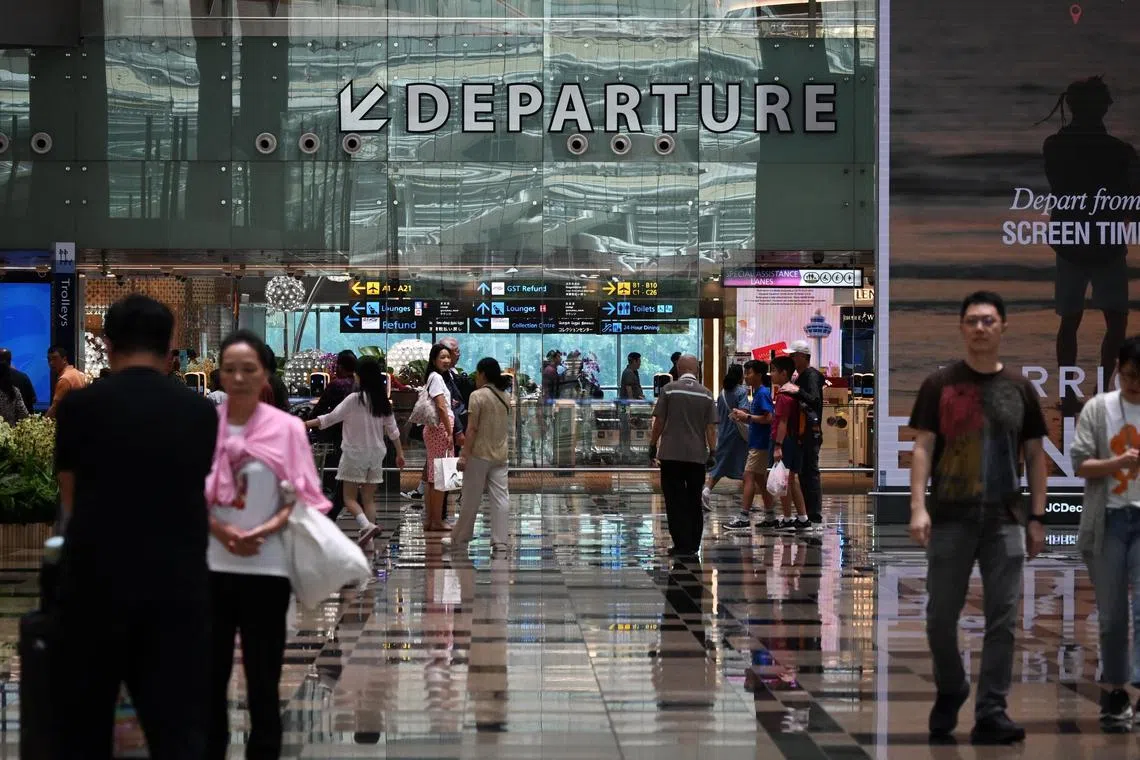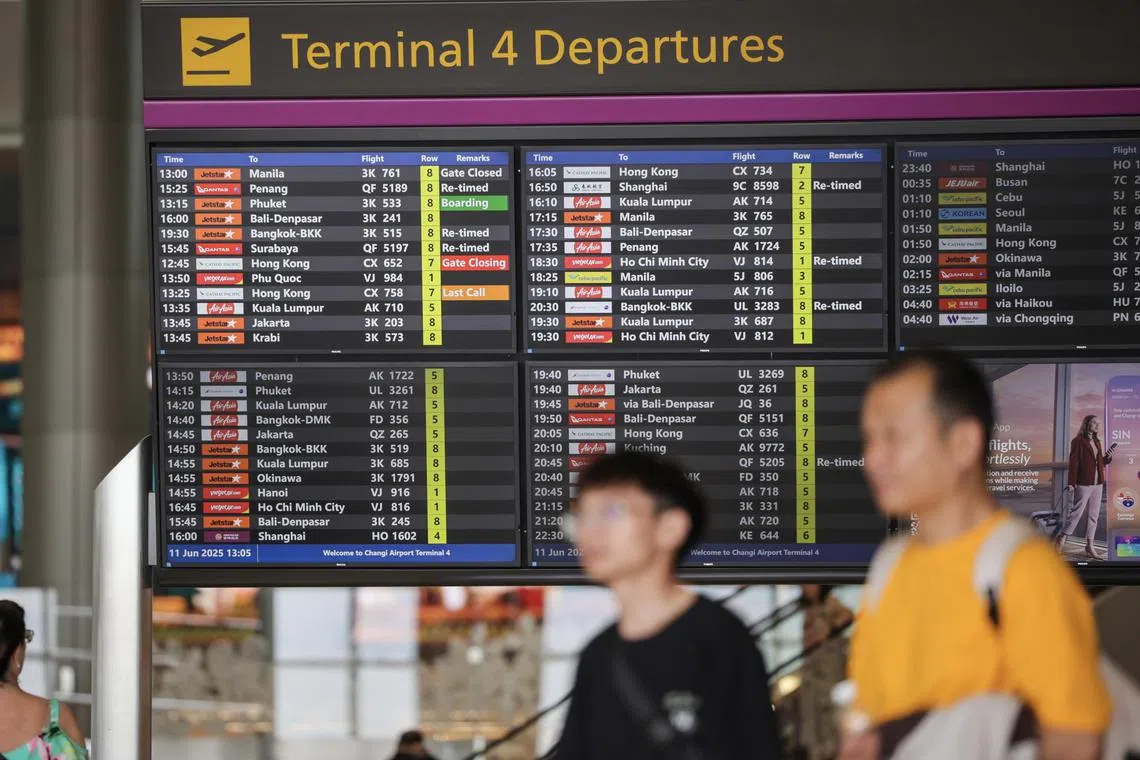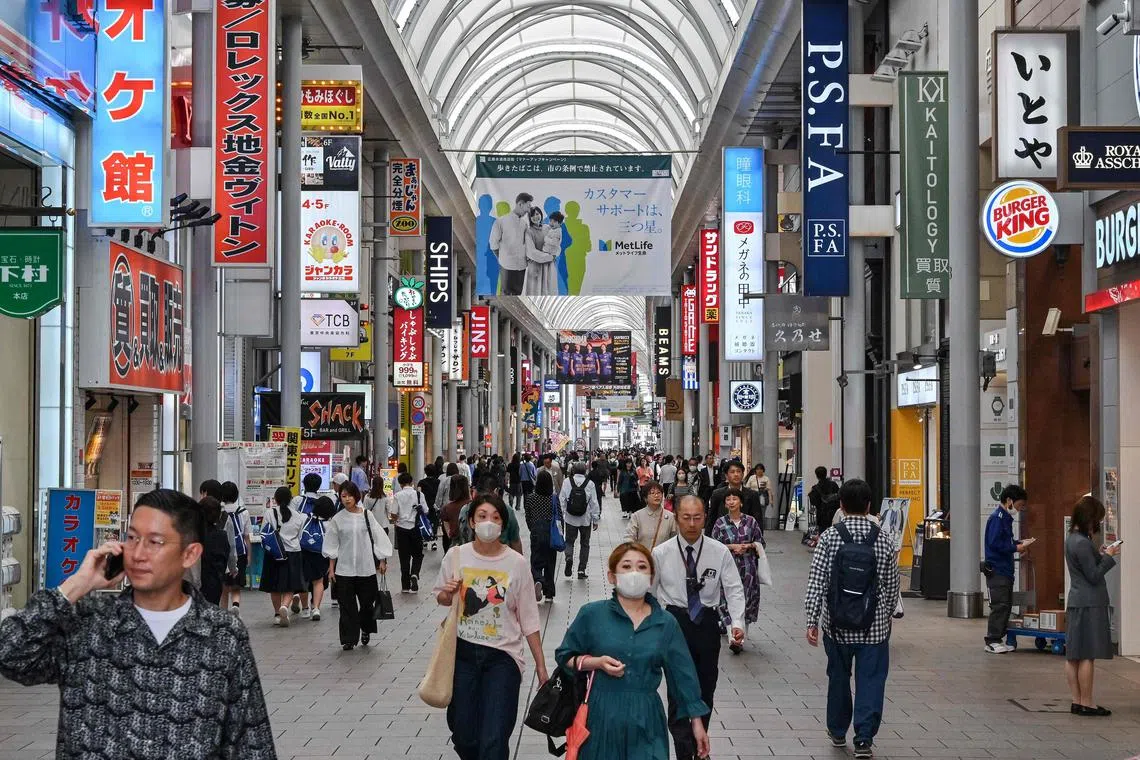Plane Truths: How to bag cheaper flights
Sign up now: Get tips on how to grow your career and money

Budget airlines account for 61 per cent of South-east Asia’s total airline seats.
ST PHOTO: LIM YAOHUI
Follow topic:
- South-east Asia's competitive airfare landscape, driven by many low-cost carriers, compels full-service airlines to offer promotions to stay competitive.
- Travellers can maximise air miles by using specific credit cards for everyday spending and redeeming flights strategically, like booking early for lower rates.
- Alternative frequent flyer programmes and departing from regional airports can unlock better value, alongside signing up for airline newsletters for promotions.
AI generated
SINGAPORE – For many travellers, hunting for cheap flights has become a sport. With airlines dangling weekly promotions and tweaking their rewards charts, those who know where to look can save hundreds – or even fly for almost free.
This game is especially rewarding in South-east Asia, where air travel is dominated by low-cost carriers.
“Travellers have access to a wide mix of low-cost carriers (LCCs) alongside strong full-service airlines, often competing on the same routes. This creates intense competition, but it’s not just about fares. Airlines also compete on schedule convenience, service quality and overall experience,” says Mr Ritchie Ramsamy, regional director for Asia-Pacific at Airline Tariff Publishing Company (ATPCO).
ATPCO is an airline pricing and data leader that works with more than 440 airlines. Its headquarters are in Virginia, the United States, and it has offices in London and Singapore.
According to aviation data consultancy OAG Aviation’s Megahubs 2024 report, 16 of its top 25 LCC airport mega hubs are from Asia-Pacific, with budget airlines accounting for 61 per cent of South-east Asia’s airline seats.

The airfare landscape in South-east Asia is particularly competitive, due in part to the high proliferation of low-cost carriers.
ST PHOTO: KUA CHEE SIONG
The market share held by LCCs in South-east Asia is nearly two-thirds, compared with a global average of 30 to 40 per cent, estimates Mr Kadam Aggarwal, a partner at Asia-focused management consulting firm YCP Auctus. He specialises in aviation and airports.
“By nature of how they operate, LCCs drive down prices and that makes for greater competition,” he says.
Full-service airlines such as Singapore Airlines (SIA), Emirates and Cathay Pacific are also compelled to join the fray, offering regular promotional fares and exclusive discounts to their frequent flier programme members to maintain their edge.
As travellers in South-east Asia are informed and digitally savvy, it also makes them particularly price-sensitive, says Mr Ramsamy. “They often compare multiple options across airline websites, online travel agencies and meta-search engines before deciding where to spend.”
So, how exactly can you take advantage of the fierce competition? Here are five tips to help you travel farther for less.
1. Supercharge your miles earning
Optimise the earning and spending of your miles. By channelling everyday spending to the right credit cards, especially those that offer up to 4 miles per dollar on categories such as dining, online shopping or ride-hailing, you can quickly build a sizeable stash.
Brand strategy director Edmund Tan, 37, who travels around nine times a year, considers factors such as how many miles per dollar he can earn on categories available for spending.
While managing spending in this way may seem complicated at first, Mr Tan says travellers must make the leap to reap airfare rewards sooner. He has been accruing miles since 2019, while his wife Evelyn Tan, 36, started in 2017.
They recommend signing up for entry-level options such as the UOB Preferred Platinum Visa Card, Citi Rewards Card and DBS Woman’s World Card.
2. Redeem your award flights wisely
Racking up miles is only half the battle won. To truly unlock value, you need to redeem them at a good rate.
For instance, SIA opens up award seats to the majority of its destinations 355 days in advance at 8am, which means those willing to plan early can secure high-demand long-haul routes at the lowest redemption rates.
Its awards chart has two categories: Saver and Advantage. Saver awards cost around 50 per cent of Advantage awards, but have more limited availability.
Scoot’s revamped KrisFlyer redemption chart, introduced in August, also has these categories and opens up new opportunities for cheap travel, with one-way flights to nearby cities starting at 1,500 miles. Note that taxes, surcharges and fees are applicable on top of the miles required for flight redemptions.
Scoot’s chief commercial officer Calvin Chan says the airline has been exploring ways to expand its offerings to members, as well as provide greater rewards and benefits to its customers, since joining the KrisFlyer programme in 2015.
“We encourage travellers to book their flights early or be flexible with travel dates to snag a Saver award flight, which requires fewer KrisFlyer miles. For those with last-minute travel needs, Advantage award flights may still be a good way to fly affordably,” he adds.
Scoot’s award flights apply to its Economy class seats, and include destinations that SIA does not fly to, such as Phu Quoc in Vietnam, Kertajati in Indonesia and Chiang Mai in Thailand.

Travellers should not only maximise miles earning, but also look to redeem them at good rates.
ST PHOTO: GIN TAY
Mr Fairuz Sallim, founder of travel hacks website Suitesmile, sees the new redemption system as a good way to spend miles. “For best value, you want to redeem award flights that offer you more than two cents per mile,” he says.
The worth of a mile can be calculated by dividing the cash fare of a flight – excluding additional taxes – with the number of miles needed to redeem it.
For instance, checks by The Straits Times on Sept 1 show that a one-way flight to Bangkok on Scoot on Oct 6 costs $145.17. It can also be redeemed for 2,500 KrisFlyer miles and $67.17 payable for tax, which makes each mile worth around 3 cents.
3. Consider alternative frequent flier programmes
While KrisFlyer may be the most recognisable programme in Singapore, it pays to spread out your miles. Mr Fairuz suggests comparing the awards rates among frequent flier programmes to find the best value.
He recommends Singapore-based travellers explore the Avios programme – which includes airlines such as Qatar Airways, British Airways and Finnair, for miles-redeemable flights to Europe, as well as Eva Air’s programme for flights to Japan and South Korea.
For instance, a round-trip economy flight to Tokyo on Eva Air costs 35,000 miles via its frequent flier programme Infinity MileageLands. On SIA, it currently costs 54,000 KrisFlyer miles.
Keeping an eye on these alternatives and being flexible enough to redeem credit card points for different frequent flier programmes can unlock outsized value.

Comparing award flights between frequent flier programmes can result in securing cheaper airfare deals to destinations such as Japan and Europe.
PHOTO: AFP
4. Depart from other regional airports
Lawyer and miles strategist Daniel Lim (@danfliesthemile on Instagram) occasionally stretches his travel dollar by departing from nearby cities instead of Singapore.
Of the roughly 100 flights he takes a year, around half are award flights he redeems with miles. He sometimes books these flights from cities such as Jakarta and Kuala Lumpur, travelling there by LCCs.
“Sometimes, when you try to find flights with SIA from Singapore, you might see that there’s a waitlist or only the more costly Advantage awards available. But if you start your journey from elsewhere nearby, you might see Saver fares or instant confirmation available,” Mr Lim says.
“It’s because the airline likely wants to incentivise connecting traffic from those cities.”
For example, he estimates that a one-way SIA Suites ticket from Singapore to Mumbai in May 2024 would have cost 58,500 miles.
Instead, he and his partner – who is from Indonesia – first took a budget flight to Jakarta, where they spent some time on holiday and visited her family and friends.
From there, he redeemed the same number of miles on a First class ticket on SIA that flew them from Jakarta to Singapore, and onwards from Singapore to Mumbai. As they had 11 hours between the flights, they used the airport lounge to rest and freshen up before going to Mumbai.
That meant their extra First class leg from Jakarta to Singapore – typically worth 30,500 miles – was essentially free. By starting their trip in Jakarta, they managed to stretch their miles but also made the most of their extended holiday.
5. Tap deal-hunting networks
Sometimes, the best hack comes straight from the source – airlines often drop their airfare promotions first through their mailing lists.
Scoot, for instance, runs weekly Gotta Scoot Tuesday promotions and other flash discounts.
Beyond that, travel and miles strategy communities like Milelion ( t.me/milelionroars t.me/suitesmile
Plane Truths is a new series that makes sense of air travel. For more travel stories, go to
str.sg/travel


